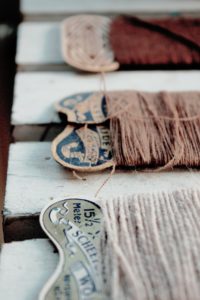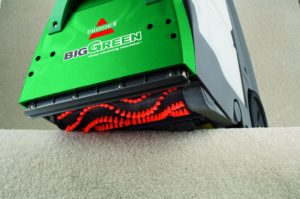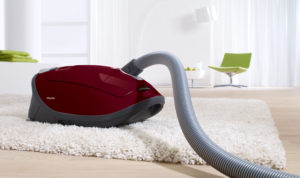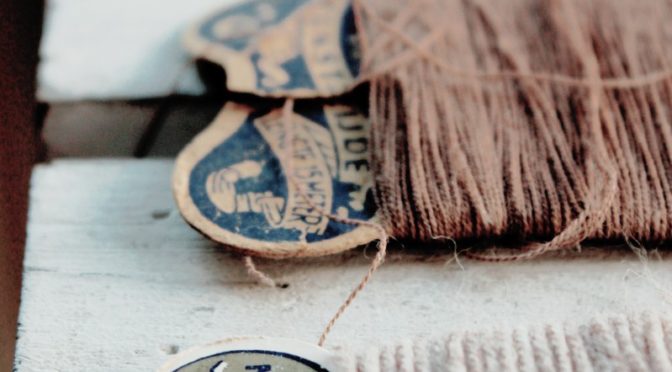
There are a lot of terms in the carpet industry that can make choosing a good carpet about as fun as tuning a piano (which isn’t fun, by the way). That doesn’t even begin to go into the factors you’ll want to consider when choosing carpets for different parts of your home (e.g., the family room vs. stairs vs. a bedroom or basement). We’ve tried to cover a range of need-to-know terms in our carpeting and flooring guides, and today we’re going to look at carpet fiber twist.
Besides defining it, we’ll explain why it’s important, share how to calculate it, and clarify the degree to which it affects the quality and durability of a carpet.
What is carpet fiber twist and how do you measure it?
A carpet’s fiber twist, also known as the twist number, is a measure of how many times a carpet’s fibers twist (or turn) around themselves per inch of fiber. It’s always a single number, and you’ll frequently see it abbreviated as a TPI, or turns per inch. Sometimes you’ll also hear it called a yarn twist or carpet twist; it’s the same concept. As an example of how it’s calculated, if you looked at a one inch length of frieze carpet and found the fibers were twisted 5 times around each other, your twist number would be 5.
Despite how important a carpet’s twist number can be when determining how well the carpet is likely to hold up over time (more on that below), not every manufacturer is willing to share the twist number when labeling their carpeting. Fortunately, you can figure it out on your own with nothing more than a ruler and a few minutes of your time. Grab a carpet, separate a fiber strand, measure out one inch of it, and count the number of twists you find. If you’re dealing with a carpet pile shorter than one inch long (which is likely, as higher pile carpets aren’t nearly as common as low-pile carpets), you’ll need a bit more math: measure a half inch of carpet and multiply the number of twists by two to find the TPI.
Why is carpet fiber twist important?
A carpet’s twist number is valuable because it’s a good shorthand for the quality and durability of the carpet you’re about to buy. Higher twist numbers, or more twisted strands per inch of fiber, mean the carpet will perform better in the long term than a carpet with a lower twist number. This will also be reflected in a longer carpet warranty; manufacturers don’t put many years of insurance behind carpets they don’t think are going to last.
The reason higher twist numbers reflect greater durability is because fibers become stronger when twisted together, much in the same way a sheet of paper becomes harder to tear when rolled up than when laid flat. A carpet with twisted fibers will support high levels of traffic with greater ease and be more resistant to crushing and flattening. Common examples of carpets with long fibers include shag carpets and friezes, and both are known for their durability as a result.
Can fiber twist numbers be used to compare all carpets?
While it’s tempting to look for a single metric with which to judge all carpets, the twist number isn’t going to work in every situation. Remember that the twist of a fiber only affects carpets with cut piles; fiber twist is irrelevant for carpets with looped piles like berbers, as their fibers are looped into the backing of the carpet instead of allowed to stand upright. Also remember that even though fiber twist is important when estimating carpet quality, it’s not the only factor to keep in mind. You need to take several elements into consideration when developing an idea of how long a carpet is going to last and how well it will perform during those years.
What fiber twist numbers should you expect in a new carpet?
The majority of residential cut pile carpets will have twist numbers of 3, 4, 5, or 6, although some particularly low quality carpets can fall below these values. It’s not uncommon to see frieze carpets, however, with 7 or 8 twists per inch. As we’ve noted above, higher values are better and will be reflected in the longevity of your carpet.
Are high twist carpets more difficult to clean or vacuum?

While higher fiber twists typically indicate higher quality carpets, they aren’t necessarily going to be more difficult to clean; that has more to do with fiber density and pile height. That said, carpets with high twists and long fibers are typically more challenging to clean than carpets with low twists and short fibers. Our standard recommendation for a carpet cleaner capable of cleaning just about anything for under $1,000 is the Bissell 86T3 Big Green. It pairs power with longevity and is a machine you’ll see in homes, for rent, and used by carpet cleaners on a daily basis for good reason.

For vacuuming carpets, rather than buying what’s cheapest at your local box store or online, we recommend investing in buy-it-for-life machines capable of cleaning all piles and all styles of carpeting (including those with very higher fiber twists). In our books, that means vacuums like the Miele Complete C3 Soft Carpet or the Miele Compact C2 Electro+. The Soft Carpet is renowned for its ability to tackle all kinds of carpets while the Electro+ gives you most of the performance on a smaller budget.
![]() You can buy the Bissell 85T3 Big Green carpet cleaner here on Amazon. You can buy the Miele Complete C3 Soft Carpet here or buy the Miele Compact C2 Electro+ here.
You can buy the Bissell 85T3 Big Green carpet cleaner here on Amazon. You can buy the Miele Complete C3 Soft Carpet here or buy the Miele Compact C2 Electro+ here.
![]() Canadians can buy the Miele Soft Carpet here, the Compact Electro+ here, and the Bissell Big Green here.
Canadians can buy the Miele Soft Carpet here, the Compact Electro+ here, and the Bissell Big Green here.
 If you find our research on PMC helpful, you can follow our efforts to keep maniacally reviewing home cleaning tools by shopping through our links above. We promise to keep fighting the good fight against every horror children, animals, and grown, yet messy humans can inflict upon a clean home.
If you find our research on PMC helpful, you can follow our efforts to keep maniacally reviewing home cleaning tools by shopping through our links above. We promise to keep fighting the good fight against every horror children, animals, and grown, yet messy humans can inflict upon a clean home.

